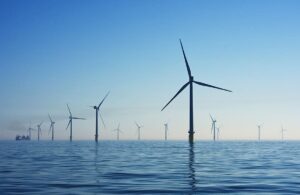 by Bill O’Keefe
by Bill O’Keefe
According to lore, Yogi Berra is supposed to have said, “In theory there is no difference between theory and practice. In practice there is.”
Dominion must have had a séance with Yogi and just learned that piece of wisdom because until its latest filing with the SCC it maintained that it would build its giant offshore windfarm for $9.8 billion while also getting to zero emissions by 2045. Now it is fessing up to that being a pipe dream. Until the recent switch, Dominion gave every indication of supporting the Virginia Clean Economy Act’s goal of zero emissions by 2045. Its latest submission to the SCC reverses course.
In its recent submission, Dominion stated, “Due to an increasing load forecast, and the need for dispatchable generation, the Alternative Plans show additional natural-gas-fired resources and preserve existing carbon-emitting units beyond statutory retirement deadlines established in the VCEA.” Its new demand estimate comes from PJM, the regional grid operator that Dominion is required to use. Its earlier rosy scenario proves that analyses can be constructed to produce whatever answer you want. In this case, Dominion saw a way to increase its profits by gaming the VCEA, at least until it began to look like Democrats might lose this year’s election and with it the VCEA mandates.
Similar projects on the East Coast have been confronted by demands for larger subsidies by offshore developers like Orsted or outright contract cancellation. On Monday, Avangrid, a subsidiary of the Spanish utility Iberdrola, announced that it was abandoning the 804-megawatt Park City Wind project offshore Connecticut because it has become unfinanceable.
Inflation, supply chain issues, and turbine blade integrity have all played a role. Over the past four years, costs have risen more than 30% with no end in sight. That is in contrast to predictions of steadily declining costs. Clearly Dominion engaged in a lot of best-case planning in its initial plan to build 176 wind turbines 27 miles off of the Virginia coast.
The Virginia picture is even worse given the European experience with offshore wind power. The basic assumption of declining costs resulting from economies of scale has proven to be an illusion. Just the opposite has taken place. Over the past decade, Europe has seen that the performance of its wind turbines rapidly degrades, about an average of 4+% annually. As output declines and maintenance costs increase, developers have to turn to the government and rate payers for more money. The alternative would be to decommission wind operations and incur high decommissioning costs.
Under-performance and cost overruns should not come as a surprise. The Peterson Institute recently published a study of 50 years of American Industrial policy. It concluded that while there were some successes, programs to promote particular industries were costly failures.
Politicians who write legislation like the VCEA are influenced by colleagues, staff, lobbyists, and other special interests. As a result, what is passed usually involves enough compromises to get enough votes to pass; not a plan that reflects technical realities and the host of uncertainties that have to be dealt with over a long period of time. It is the difference between planning a two-week cruise, which is easy, and telling Admiral Peary to find the North Pole in less than one year. It took him eight tries and 23 years.
The late Senator William Proxmire, known for fighting against pork in federal budgets and regularly giving out the Golden Fleece Award, observed, “An inherent feature of all interventionist industrial policies is government money will go where the political power is. … Government controls always accompany subsidies. … This usually leads to requests for even more corporate welfare… As history has shown, an interventionist industrial policy… is a recipe for economic stagnation and decline.”
In addition to political, economic, and innovation forces confronting the windfarm project, there are internal problems that are created when a firm that excels in executing a process like generating electrical power has to simultaneously become innovative in its thinking and operation. Developing its windfarm involves dealing with uncertainty, complexity, and ambiguity.
Innovation is about solving problems and there are many ways of doing so. Picking the right path is not easy, even though once an organization has chosen a path, it will act as if it is the best one. Overcoming organizational inertia is one of the biggest challenges an organization like Dominion faces in making a major shift from baseload power generation to an alternative like wind.
Dominion is organized to deliver predictable, reliable results, which leads to a paradox. The systems that have made its success continuously possible reinforce behaviors that are probably inconsistent with the innovative systems that have been mandated to meet a specific deadline.
Bill O’Keefe is a former executive vice president of the American Petroleum Institute and the founder of Solutions Consulting.

Leave a Reply
You must be logged in to post a comment.